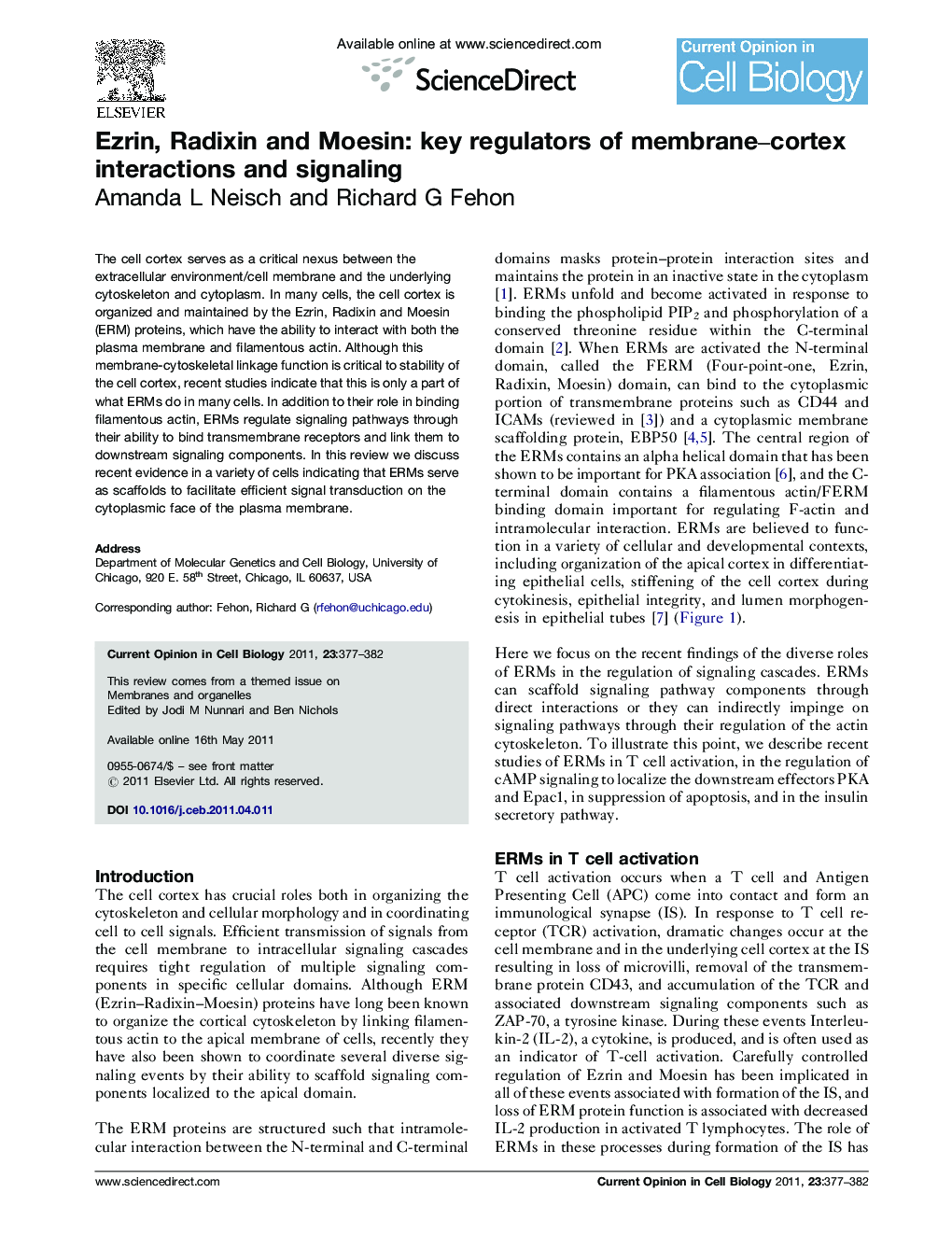| Article ID | Journal | Published Year | Pages | File Type |
|---|---|---|---|---|
| 2169881 | Current Opinion in Cell Biology | 2011 | 6 Pages |
The cell cortex serves as a critical nexus between the extracellular environment/cell membrane and the underlying cytoskeleton and cytoplasm. In many cells, the cell cortex is organized and maintained by the Ezrin, Radixin and Moesin (ERM) proteins, which have the ability to interact with both the plasma membrane and filamentous actin. Although this membrane-cytoskeletal linkage function is critical to stability of the cell cortex, recent studies indicate that this is only a part of what ERMs do in many cells. In addition to their role in binding filamentous actin, ERMs regulate signaling pathways through their ability to bind transmembrane receptors and link them to downstream signaling components. In this review we discuss recent evidence in a variety of cells indicating that ERMs serve as scaffolds to facilitate efficient signal transduction on the cytoplasmic face of the plasma membrane.
► ERMs organize the cell cortex and regulate signaling pathways. ► ERMs function in the immunological synapse and restrict the response to T cell receptor activation. ► ERMs regulate protein kinase A signaling by scaffolding this kinase to downstream effectors. ► In Drosophila ERMs promote cell survival by limiting RhoA and JNK activity.
